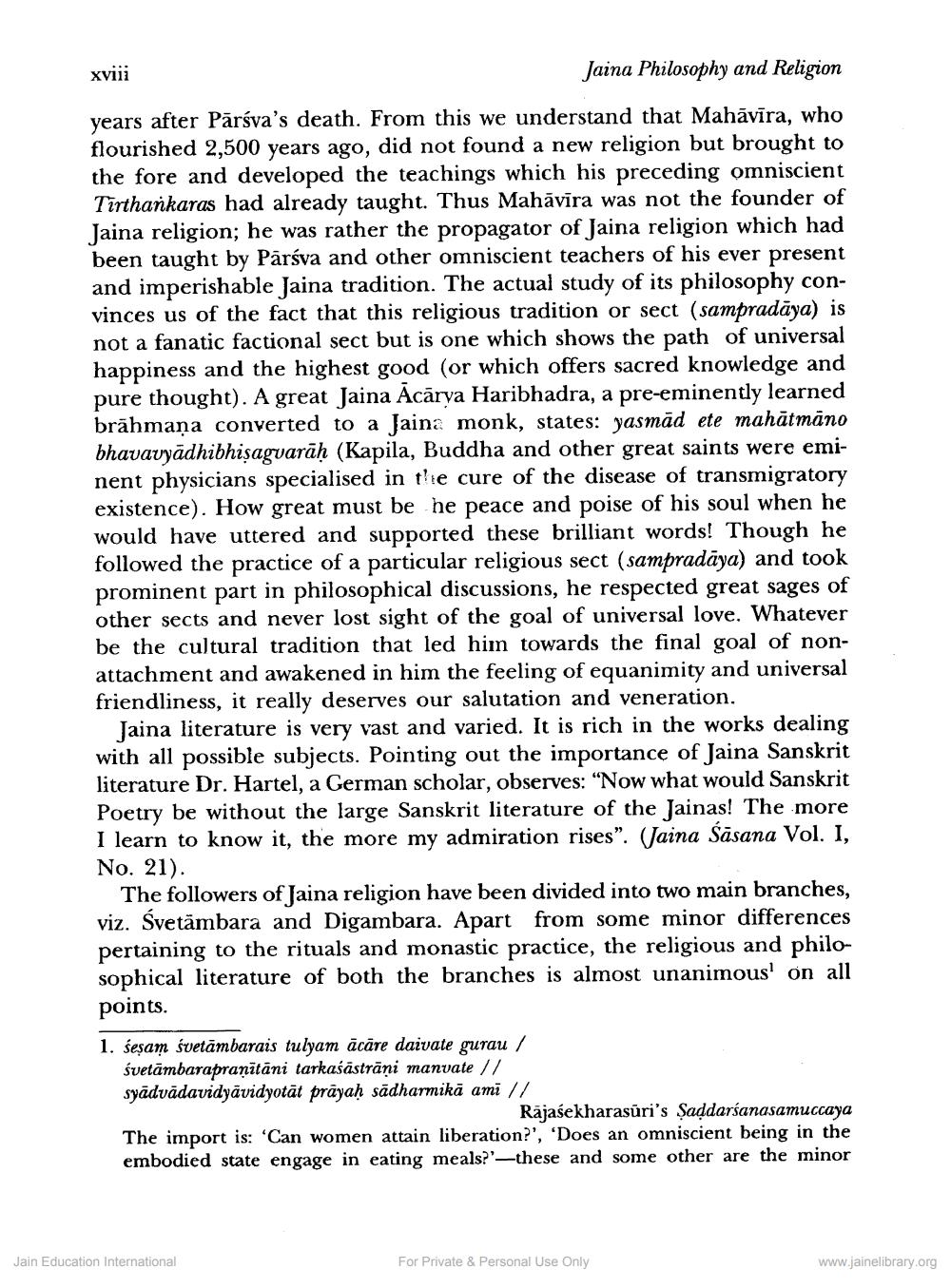________________
xviii
Jaina Philosophy and Religion
years after Pārsva's death. From this we understand that Mahāvīra, who flourished 2,500 years ago, did not found a new religion but brought to the fore and developed the teachings which his preceding omniscient Tirthankaras had already taught. Thus Mahāvīra was not the founder of Jaina religion; he was rather the propagator of Jaina religion which had been taught by Pārśva and other omniscient teachers of his ever present and imperishable Jaina tradition. The actual study of its philosophy convinces us of the fact that this religious tradition or sect (sampradāya) is not a fanatic factional sect but is one which shows the path of universal happiness and the highest good (or which offers sacred knowledge and pure thought). A great Jaina Acārya Haribhadra, a pre-eminently learned brāhmaṇa converted to a Jaina monk, states: yasmād ete mahātmano bhavavyādhibhisagvarāḥ (Kapila, Buddha and other great saints were eminent physicians specialised in the cure of the disease of transmigratory existence). How great must be he peace and poise of his soul when he would have uttered and supported these brilliant words! Though he followed the practice of a particular religious sect (sampradāya) and took prominent part in philosophical discussions, he respected great sages of other sects and never lost sight of the goal of universal love. Whatever be the cultural tradition that led him towards the final goal of nonattachment and awakened in him the feeling of equanimity and universal friendliness, it really deserves our salutation and veneration.
Jaina literature is very vast and varied. It is rich in the works dealing with all possible subjects. Pointing out the importance of Jaina Sanskrit literature Dr. Hartel, a German scholar, observes: “Now what would Sanskrit Poetry be without the large Sanskrit literature of the Jainas! The more I learn to know it, the more my admiration rises". (Jaina Šāsana Vol. I, No. 21).
The followers of Jaina religion have been divided into two main branches, viz. Svetämbara and Digambara. Apart from some minor differences pertaining to the rituals and monastic practice, the religious and philosophical literature of both the branches is almost unanimous' on all points.
1. seșam svetāmbarais tulyam ācāre daivate gurau /
svetāmbarapranitāni tarkaśāstrāņi manvate // syädvādavidyāvidyotāt prāyaḥ sādharmikā ami //
Rajasekharasūri's Saddarśanasamuccaya The import is: 'Can women attain liberation?', 'Does an omniscient being in the embodied state engage in eating meals?'—these and some other are the minor
Jain Education International
For Private & Personal Use Only
www.jainelibrary.org




